GrabCAD

Cargo Bike for Short People - FIXED DOWNLOAD ERROR
by GrabCAD
Last crawled date: 3 years, 11 months ago
GoFundMe? Are you interested in a GoFundMe campaign to finance prototype builds and/or volume production? Please COMMENT and make suggestions for DESIGN IMPROVEMENTS!!! ‘Lowcost’ is not the same thing in my home town of Saint Paul, Minnesota, as it is on the Yucatan peninsula where I spend some of my time. I frequently see overloaded bicycles and I know that the big, fancy cargo bikes in Saint Paul would be useful in the Yucatan, but not very affordable and too tall for many of the folks who need them the most. It is this observation and my background as a mechanical designer and bicyclist that is inspiring me to design a simple vehicle that will be affordable and helpful to folks there and elsewhere.
My intension is to document a design that will not be protected by patents or licensing. I am hoping for collaboration, but I want to maintain tight control over the design until I find an organization that can properly maintain and improve the design in the future.
As of 2018/02/28, the design specification is as follows:
• Low cost
• Very common fabrication technologies
• Significant opportunities for end-user customization
• Opportunities for manufactures to sell complete bicycles
• Opportunities for manufactures to sell frames
• Optimized for short people
• Step-through frame
• Facilitates the use of very common and inexpensive components
• Efficient repair and servicing of the rear wheel without unloading a bicycle loaded with cargo
• An easily extended and modifiable kickstand (width) to allow unbalanced loading of cargo
• No derailleurs (Compromise in favor of robust kickstand)
• 26-inch wheels
• 135mm rear dropout spacing
• (New spec’) Off-the-shelf head tube, bottom bracket, and seat-post collar
• (New spec’) Rear disk brake mounting points per 51mm International Standard
• (New spec’) Rear stay clearance for fenders
• (New spec’) Kickstand to be extended and retracted without dismounting
• (New spec’) 28.6 mm (1-1/8") seat tube outside diameter; 27.2mm seat tube inside diameter
An earlier idea I had was to have manufacturers produce kits of components such as the head tube, down tube, seat tube, kickstand, etcetera. Kits would then be finished in simple welding shops that also fix cars and trucks, for instance. Although the idea might result in the lowest possible cost for end users, I saw too many possibilities to optimize the design in ways that will probably make the finished bicycles safer, lighter, and perform better, justifying a slightly higher cost, even in low-income areas. Therefore, I have set that idea aside for now.
The design of optional modifications such as passenger seats and cargo carriers may be provided informally as part of this project. Such documentation will not be controlled with any formality. The design is also exclusive of components such as handlebars, seats, peddles… (Basically, components that are already designed and inexpensive.) GrabCAD contributors may see some of their models in the assembly. If this is objectionable, please let me know. If you don't mind: Thank you!
My experience with product development and quality forms my conviction that the most important component of any design package is the design specification. I am hoping that people who can absorb and articulate the needs of the people of the Yucatan and similar places and then help me write a revision-controlled design document will ensure the optimal outcome of the project. At this point, the specification is what is shown above. Before the first prototype is produced, I plan to create a revision-controlled document. All components and assembly files will also be revision-controlled before building the first prototype.
Safety and product liability is an issue. These issues vary greatly around the world. Although safety is an important goal, no compliance to existing safety standards will be listed in the design requirements. It is my opinion that adequate liability protection for whoever controls the documentation can be maintained by intentionally omitting some specifications such as the grade of steel used. The design may also intentionally omit other specifications for the same reason. It is ethical, in my opinion, to provide this somewhat-limited design knowing that the intended users of these bicycles will be far safer than their present bicycles when used for equivalent tasks such as hauling cargo or passengers.
I have some ‘Wish List’ items:
• It would be great if the design could accommodate some internally geared hubs. Hopefully, the design already does accommodate some current models, but I don’t have enough experience to know with certainty. Maybe someone can look at the design and give an informed opinion on that.
• I think that the kickstand is going to be sub-optimal because it is so far back on the frame. Maybe someone will see a way to improve it. I have spent, literally, days working on the kickstand and I am just okay with the present design.
• I am also hoping to find extension springs for the kickstand and chain tensioner that are already produced in high volume for other consumer products.
• A specific shortcoming for me is my lack of knowledge with respect to commonly available tubing sizes in places like Mexico and the Philippines. Although fabricators are free to modify the design to use sizes of tubing that are more readily available in various places in the world, I want feedback regarding those sizes that I have selected.
• Bicyclists who are familiar with the needs of people in places like the Yucatan or the Philippines, etcetera, can review the design specification and make suggestions to improve it.
• Manufacturing and design professionals may scrutinize the CAD files and see opportunities to reduce cost.
• Sales and marketing folks might help to promote the project. Once the design is ready to prototype, money may help to execute multiple prototype iterations. All ideas are welcome! Financial help may never be needed if manufacturers get excited about the design.
Thanks for finding the end of this.
My intension is to document a design that will not be protected by patents or licensing. I am hoping for collaboration, but I want to maintain tight control over the design until I find an organization that can properly maintain and improve the design in the future.
As of 2018/02/28, the design specification is as follows:
• Low cost
• Very common fabrication technologies
• Significant opportunities for end-user customization
• Opportunities for manufactures to sell complete bicycles
• Opportunities for manufactures to sell frames
• Optimized for short people
• Step-through frame
• Facilitates the use of very common and inexpensive components
• Efficient repair and servicing of the rear wheel without unloading a bicycle loaded with cargo
• An easily extended and modifiable kickstand (width) to allow unbalanced loading of cargo
• No derailleurs (Compromise in favor of robust kickstand)
• 26-inch wheels
• 135mm rear dropout spacing
• (New spec’) Off-the-shelf head tube, bottom bracket, and seat-post collar
• (New spec’) Rear disk brake mounting points per 51mm International Standard
• (New spec’) Rear stay clearance for fenders
• (New spec’) Kickstand to be extended and retracted without dismounting
• (New spec’) 28.6 mm (1-1/8") seat tube outside diameter; 27.2mm seat tube inside diameter
An earlier idea I had was to have manufacturers produce kits of components such as the head tube, down tube, seat tube, kickstand, etcetera. Kits would then be finished in simple welding shops that also fix cars and trucks, for instance. Although the idea might result in the lowest possible cost for end users, I saw too many possibilities to optimize the design in ways that will probably make the finished bicycles safer, lighter, and perform better, justifying a slightly higher cost, even in low-income areas. Therefore, I have set that idea aside for now.
The design of optional modifications such as passenger seats and cargo carriers may be provided informally as part of this project. Such documentation will not be controlled with any formality. The design is also exclusive of components such as handlebars, seats, peddles… (Basically, components that are already designed and inexpensive.) GrabCAD contributors may see some of their models in the assembly. If this is objectionable, please let me know. If you don't mind: Thank you!
My experience with product development and quality forms my conviction that the most important component of any design package is the design specification. I am hoping that people who can absorb and articulate the needs of the people of the Yucatan and similar places and then help me write a revision-controlled design document will ensure the optimal outcome of the project. At this point, the specification is what is shown above. Before the first prototype is produced, I plan to create a revision-controlled document. All components and assembly files will also be revision-controlled before building the first prototype.
Safety and product liability is an issue. These issues vary greatly around the world. Although safety is an important goal, no compliance to existing safety standards will be listed in the design requirements. It is my opinion that adequate liability protection for whoever controls the documentation can be maintained by intentionally omitting some specifications such as the grade of steel used. The design may also intentionally omit other specifications for the same reason. It is ethical, in my opinion, to provide this somewhat-limited design knowing that the intended users of these bicycles will be far safer than their present bicycles when used for equivalent tasks such as hauling cargo or passengers.
I have some ‘Wish List’ items:
• It would be great if the design could accommodate some internally geared hubs. Hopefully, the design already does accommodate some current models, but I don’t have enough experience to know with certainty. Maybe someone can look at the design and give an informed opinion on that.
• I think that the kickstand is going to be sub-optimal because it is so far back on the frame. Maybe someone will see a way to improve it. I have spent, literally, days working on the kickstand and I am just okay with the present design.
• I am also hoping to find extension springs for the kickstand and chain tensioner that are already produced in high volume for other consumer products.
• A specific shortcoming for me is my lack of knowledge with respect to commonly available tubing sizes in places like Mexico and the Philippines. Although fabricators are free to modify the design to use sizes of tubing that are more readily available in various places in the world, I want feedback regarding those sizes that I have selected.
• Bicyclists who are familiar with the needs of people in places like the Yucatan or the Philippines, etcetera, can review the design specification and make suggestions to improve it.
• Manufacturing and design professionals may scrutinize the CAD files and see opportunities to reduce cost.
• Sales and marketing folks might help to promote the project. Once the design is ready to prototype, money may help to execute multiple prototype iterations. All ideas are welcome! Financial help may never be needed if manufacturers get excited about the design.
Thanks for finding the end of this.
Similar models
grabcad
free

Cargo Bike for Short People
...the needs of the people of the yucatan and similar places and then help me write a revision-controlled design...
grabcad
free

kickstand for a bicycle
...kickstand for a bicycle
grabcad
i designed a kickstand my bicycle
thingiverse
free

Bicycle Kickstand Foot by tonkugel
... tube of this part is slightly larger than a normal kickstand to make some room for slight angle adjustments during installation.
grabcad
free

Collection Leeson Motors
...lp some people like it helped me. if using for manufacturing, please double check fitment from manufacturer. i may be 1-2 in off.
thingiverse
free

Bicycle Fender Mounting Rear Light Seat Post or Tube Bracket by CyclicDesigns
...when in use, but you never need to worry about the battery capacity or run time or charging level again, much, much recommended).
grabcad
free

Bicycle kickstand
...bicycle kickstand
grabcad
kickstand for a bicycle. sw 2013.
grabcad
free

Bicycle
...wheel is held. the seat stays connect the top of the seat tube (at or near the same point as the top tube) to the rear fork ends.
thingiverse
free

Ducted Fan Quad Copter by InlineTwin
...ing designs. though i thought i would share the basic components as an opportunity for others to experiment with the quad copter.
thingiverse
free

Kickstand Foot
...kickstand foot
thingiverse
kickstand foot for a bicycle kickstand
thingiverse
free

Haul-A-Day Cargo Bike Kickstand Fix by zlp
...ompress the split tube, then securing them with threadlocker. otherwise they will loosen and come apart when you least expect it!
Cargo
turbosquid
$5

Cargo
...o
turbosquid
royalty free 3d model cargo for download as fbx on turbosquid: 3d models for games, architecture, videos. (1213097)
turbosquid
$8

Cargo
...quid
royalty free 3d model cargo for download as obj and fbx on turbosquid: 3d models for games, architecture, videos. (1314995)
3d_ocean
$15

cargo container
...ndustrial ocean port ship shipment shipping transport
cargo container created in cinema4d. also comes with various other formats.
3ddd
$1
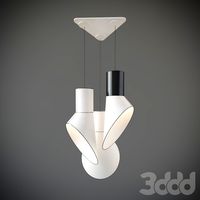
Cargo Herve Langlais
...rgo herve langlais , designheure
lamp cargo herve langlais by designheure
made in france
turbosquid
free

Cargo ship
...go ship
turbosquid
free 3d model cargo ship for download as on turbosquid: 3d models for games, architecture, videos. (1336821)
turbosquid
$2

Cargo Boxes
...urbosquid
royalty free 3d model cargo boxes for download as on turbosquid: 3d models for games, architecture, videos. (1432291)
3d_export
$5

cart for cargo transportation
...cart for cargo transportation
3dexport
hand truck for cargo transportation
turbosquid
$15

Cargo Van
...rbosquid
royalty free 3d model cargo van for download as fbx on turbosquid: 3d models for games, architecture, videos. (1406423)
turbosquid
$8

Cargo Wagon
...osquid
royalty free 3d model cargo wagon for download as fbx on turbosquid: 3d models for games, architecture, videos. (1304653)
turbosquid
free
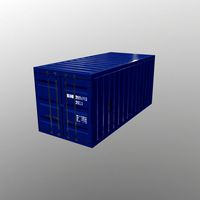
cargo container
...
free 3d model cargo container for download as obj and blend on turbosquid: 3d models for games, architecture, videos. (1203787)
Error
3d_export
$9
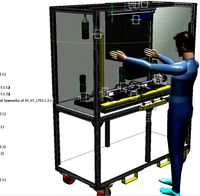
of automobile component error proofing system
...cific product defects; the other is to check the products one by one through cheap means to determine whether they are qualified.
3d_export
$10

Vase 3D Model
...3d model 3dexport vase vase 3d model escape since error 25561...
3d_export
$14

VaseCollection 3D Model
...model 3dexport vase collection vasecollection 3d model escape since error 25568...
3d_export
$16
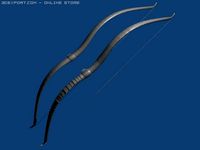
Hungarian bow 3D Model
...3dexport arrow bow hungarian bow 3d model escape since error 25583...
3d_export
$99

isadora table
...matching polished bronze trim model hight poly no map error no texture error polys : 496,662 verts :...
3ddd
$1
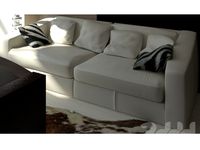
Tobias_Frighetto
...по референсам из каталога frighetto. stl check - no error. ...
3d_export
$5

wooldoor sockbat
...the image.<br>the only thing is that it has small error in the mesh, that's why the...
3d_export
$15

Eraser 3D Model
...3dexport eraser rubber artist faber castell art pencil mistake error erase remove realistic detailed high definition def staedtler mars...
3d_export
$5

fantasy winged helmet and sword
...the sword and the helmet. if there are any error pls comment and check out my...
3ddd
$1

Brianform AMELIE
...для 3d max 2014.obj файл,проверено модификатором stl check -no error. ...
Bike
3d_ocean
$18
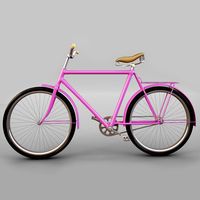
Bike
...bike
3docean
bicycles bike sports transport
3d model bike
3d_export
$5
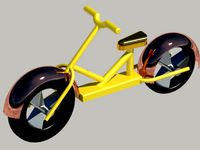
bike
...bike
3dexport
bike
3d_export
$50

bike
...bike
3dexport
3d bike model
turbosquid
free
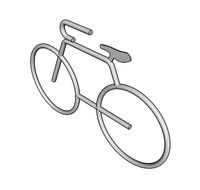
bike-bike-rack
... available on turbo squid, the world's leading provider of digital 3d models for visualization, films, television, and games.
archibase_planet
free

Bike
...bike
archibase planet
bike bicycle cycle
bike n161113 - 3d model (*.gsm+*.3ds+*.max) for exterior 3d visualization.
archibase_planet
free
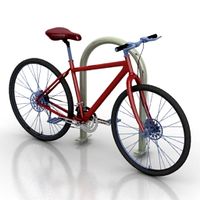
Bike
...bike
archibase planet
bike bicycle cycle
bike and rack n220613 - 3d model (*.gsm+*.3ds+*.max) for exterior 3d visualization.
archibase_planet
free
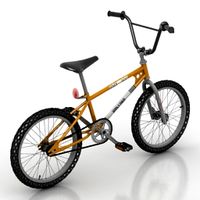
Bike
...rchibase planet
bike bicycle cycle two-wheeled bicycle
bike n031213 - 3d model (*.gsm+*.3ds+*.max) for exterior 3d visualization.
archibase_planet
free

Bike
...rchibase planet
bike bicycle cycle two-wheeled bicycle
bike n180714 - 3d model (*.gsm+*.3ds+*.max) for exterior 3d visualization.
3d_ocean
$35
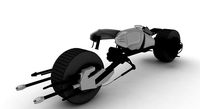
Batpod Bike
...cean
batman batman bike batpod bike bike motorcycle stylish bike
detailed model of a famous batpod bike used in the movie batman.
3d_export
$5
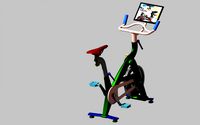
exercise bike
...exercise bike
3dexport
exercise bike, spin bike, bike, gym equipment, exerciser
Short
3d_ocean
$3

Shorts
...shorts
3docean
3d models clothes & accessories shorts
3d models, clothes & accessories, shorts
turbosquid
free

shorts
...shorts
turbosquid
free 3d model shorts for download as blend on turbosquid: 3d models for games, architecture, videos. (1433959)
3d_export
$5

short foot
...short foot
3dexport
short foot
turbosquid
$15

short
...royalty free 3d model short for download as max, max, and pac on turbosquid: 3d models for games, architecture, videos. (1568324)
turbosquid
$9

Shorts
... available on turbo squid, the world's leading provider of digital 3d models for visualization, films, television, and games.
3d_export
$5

pant short
...pant short
3dexport
pant short for cc 3
3d_ocean
$2
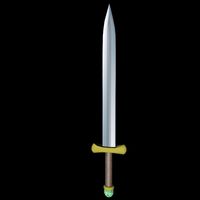
Short sword
...sy fentezi for games podhodit short style textured
short blade, textured style fentezi.podhodit for fantasy animations and games!
3d_export
$5
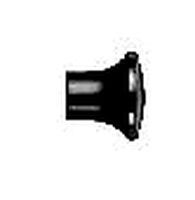
short simple knob
...short simple knob
3dexport
short simple knob
3d_export
$5
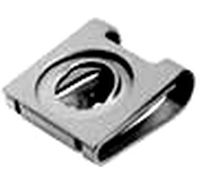
short screw clip
...short screw clip
3dexport
short screw clip
turbosquid
$2

Short Table
...urbosquid
royalty free 3d model short table for download as on turbosquid: 3d models for games, architecture, videos. (1324464)
People
3d_ocean
$19

People
...people
3docean
boy character girl men people person woman
low-poly people
3ddd
$1
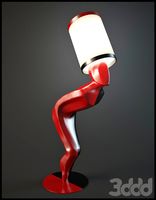
People
...people
3ddd
торшер "people" h=1650
3d_export
free
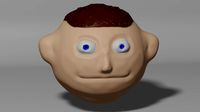
people
...people
3dexport
this is a 3d model of head people. very good work with texture .
turbosquid
$10

Sustainable Speaker by People People
...odel sustainable speaker by people people for download as max on turbosquid: 3d models for games, architecture, videos. (1142184)
turbosquid
$7

guitar and people, people and music
...nd people, people and music for download as max, obj, and dwg on turbosquid: 3d models for games, architecture, videos. (1480506)
turbosquid
$65

people
...oyalty free 3d model people for download as max, obj, and stl on turbosquid: 3d models for games, architecture, videos. (1542769)
turbosquid
$29

people
...y free 3d model people for download as 3ds, obj, c4d, and fbx on turbosquid: 3d models for games, architecture, videos. (1443346)
turbosquid
$3

people
... available on turbo squid, the world's leading provider of digital 3d models for visualization, films, television, and games.
turbosquid
free
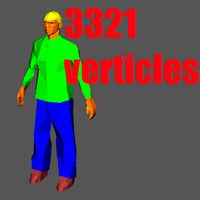
People
... available on turbo squid, the world's leading provider of digital 3d models for visualization, films, television, and games.
3d_export
$10
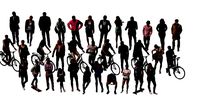
young people
...young people
3dexport
young people
Fixed
3ddd
$1
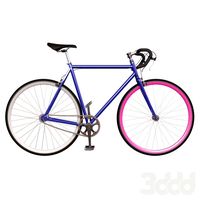
Fixed Gear Велосипед
... fixed , bicycle
классический шоссейный велосипед, переделанный под fixed gear.
design_connected
$16

Idée fixe
...idée fixe
designconnected
jacco maris idée fixe computer generated 3d model. designed by maris , jacco.
3d_export
$5

fixing scale knob
...fixing scale knob
3dexport
fixing scale knob
turbosquid
$10

Mini Fix
...bosquid
royalty free 3d model mini fix for download as sldas on turbosquid: 3d models for games, architecture, videos. (1581558)
turbosquid
$49

fixed bike
... available on turbo squid, the world's leading provider of digital 3d models for visualization, films, television, and games.
turbosquid
$39

Fixed Bicycle
... available on turbo squid, the world's leading provider of digital 3d models for visualization, films, television, and games.
3ddd
$1
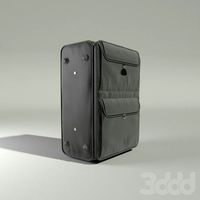
Bag Fixed
...bag fixed
3ddd
чемодан
a bag model by me
3ddd
$1

Кресло BEAU FIXE
...fixe
3ddd
beau fixe , ligne roset
кресло beau fixe:
w 80 cm d 106 cm h 97 cm sh 43,5 cm
turbosquid
free

Crowbar "Fixed"
... available on turbo squid, the world's leading provider of digital 3d models for visualization, films, television, and games.
3ddd
$1
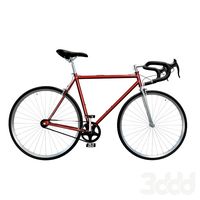
Fixed gear
...fixed gear
3ddd
велосипед
шоссейный велосипед с фиксированной передачей
Download
turbosquid
$2

Download Icon
... available on turbo squid, the world's leading provider of digital 3d models for visualization, films, television, and games.
3d_export
$10

iron man download
...iron man download
3dexport
iron man 3d model download
3d_export
free

man download in the fbx
...ublish a man 3d model in the fbx format this model was provided by website in free type . download and enjoy this man 3d model
turbosquid
free

Home Model Free Download
...d
free 3d model home model free download for download as max on turbosquid: 3d models for games, architecture, videos. (1271205)
turbosquid
free

Building Model Free Download
...ree 3d model building model free download for download as max on turbosquid: 3d models for games, architecture, videos. (1271192)
turbosquid
free

Villa Home Free Download
...d
free 3d model villa home free download for download as max on turbosquid: 3d models for games, architecture, videos. (1271166)
3d_export
$10

original new goldfish download goldfish sculpture 3d drawing download
...g machine carving drawing design, digital art sculpture small goldfish, gold, silver and copper jewelry casting small fish model.
3d_export
$10

female body art model download 3d large chest female model download
...t female upper body model download sculpture model, female body basic model material download downloadable stl format, obj format
3d_export
$15

3d man body model download
...nload
3dexport
3d man body model download, man body basic model download, normal muscle man posture model, stl manikin download.
3d_export
$5

scale ball stl format download
... format download
3dexport
scale ball stl format download, 3d dragon scale ball download, wood carving machine string bead design
